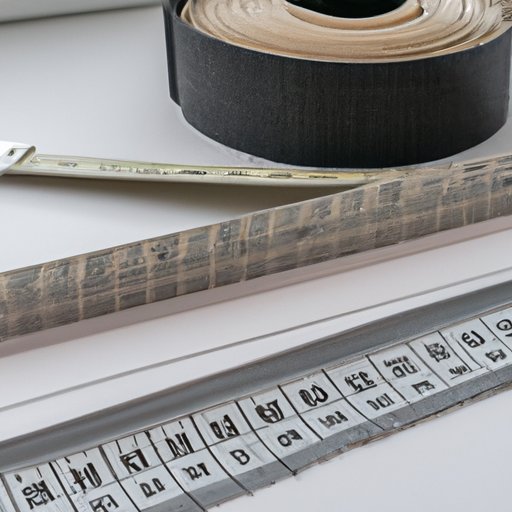
Introduction
When it comes to window treatments, having the perfect fit can make all the difference. But measuring windows for blinds can be a tricky task, especially for those who may be unfamiliar with the process. In this article, we offer homeowners a comprehensive guide on how to properly measure their windows for blinds to achieve the best possible fit.
Start with the Basics
Before you begin measuring your windows, it’s essential to understand the process and gather the necessary tools. You’ll need a metal measuring tape, a pencil or pen, and a pad of paper to record your measurements. When taking measurements, it’s critical to account for the depth of the window and any molding surrounding it. This depth may impact the type of mounting brackets you’ll need, so be sure to measure accurately.
Break it Down by Blind Type
There are many different types of blinds, including roller, venetian, cellular, and Roman blinds, to name a few. Each type of blind requires unique measuring techniques, so it’s essential to research the type of blind you plan to install and follow specific guidelines when measuring.
Roller Blinds: To measure for roller blinds, measure the width in three places, noting the smallest measurement. Then, measure the height in three places, again noting the smallest measurement.
Venetian Blinds: Measuring for Venetian blinds requires measuring the window opening’s width and height and then subtracting 10mm from the width and 15mm from the height for clearance.
Cellular Blinds: Cellular blinds, also called honeycomb blinds, are ideal for insulating windows. Measuring for these blinds involves measuring the width and height, ensuring you account for the depth of the window and the mounting brackets.
Roman Blinds: To measure for Roman blinds, measure the width of the window frame’s interior and the length from the top of the frame to the bottom of the window sill or desired length.
Discuss Common Mistakes
Even a small measuring error can lead to ill-fitting blinds, so it’s essential to avoid common measuring mistakes. Here are a few pitfalls to avoid:
- Measuring on a diagonal: Always measure width and height separately, as diagonal measurements can be imprecise.
- Forgetting to consider the inside mount: When planning for an inside mount, be sure to measure at the top, middle, and bottom of the window frame.
- Not accounting for hardware on the windows: If your window has handles, locks, or cranks, be sure to measure above or below these fixtures if needed.
Include Diagrams or Videos
Images or videos can be incredibly helpful in demonstrating the measuring process, especially for visual learners. If possible, include a diagram or short video tutorial demonstrating measuring techniques to help readers better understand the process.
Offer a Checklist
Providing a checklist at the end of the article is a great way to ensure your readers have everything they need before they start measuring. Here’s a basic checklist to consider:
- Measuring tape
- Pencil
- Pad of paper
- Step stool for hard-to-reach windows
- Level to ensure blinds hang straight
Provide an FAQ Section
An FAQ section at the end of the article can help alleviate readers’ concerns and offer answers to common questions. Here are a few questions to consider:
- What’s the difference between inside and outside mounts?
- How tight should I measure for inside mounts?
- What if my measurements are slightly off?
Cover Customization Options
Lastly, it’s essential to provide information on customization options, particularly if readers plan to purchase custom blinds. Factors like slat size, valances, and motorization can all impact the measuring process, so be sure to offer tailored advice on how to adjust measurements accordingly.
Conclusion
Measuring windows for blinds may seem overwhelming, but with the right tools and guidance, it can be a straightforward process. Remember always to measure accurately, take into account the type of blind you are installing, and review common mistakes to avoid. By following our comprehensive guide, homeowners can achieve the perfect fit for their window treatments.





